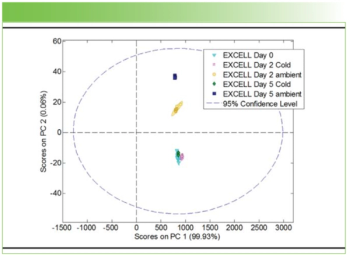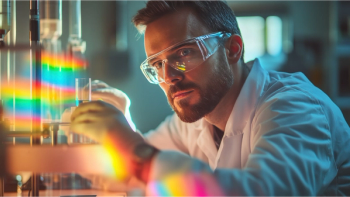
Tobacco Stem Impurities Identified with New Hyperspectral Superpixel Technique
To effectively classify tobacco stems and impurities, a group of scientists from Jiangsu, China used hyperspectral superpixels to separate classify compounds and avoid the influence of interference fringes.
A group of scientists from Jiangsu, China is using hyperspectral superpixels to classify the compounds in tobacco stems and avoid the influence of interference fringes. Their work was published in Spectrochimica Acta Part A: Molecular and Biomolecular Spectroscopy (1).
Tobacco stems are important in cigarette production because they reduce costs and decrease the tar content of cigarettes. However, there is a risk during the process of non-tobacco impurities, such as plastics, paper sheets and feathers, mixing with tobacco stems which can affect the quality of cigarettes and pose risks to human health. Computer vision technology is widely used in impurity detection, but conventional cameras cannot identify a substances’ chemical properties in detail, which is an issue with tobacco stems, where impurities can be the same color as the stems, such as paper and feathers, or be transparent, such as plastic films. To address this concern, the team used hyperspectral imaging, which combines traditional imaging and spectral imaging. They also recorded the positions of spectral pixels and merged them into a three-dimensional (3D) data matrix, which proved effective in quantitatively analyzing recorded objects.
The team used gradient boosting decision tree (GBDT), which is a machine learning (ML) model to classify the elements in tobacco stems. This ML method iteratively trains weak classifiers to obtain an optimal model, using a light gradient boosting machine (LightGBM) based on the GBDT and supporting efficient parallel training in the process. LightGBM has become a widely used in the tobacco industry, usually coupled with high-speed hyperspectral imaging technology.
First, the hyperspectral image is segmented using superpixels and then the gray-level co-occurrence matrix extracts the texture features of superpixels. Subsequently, an improved LightGBM is applied and trained with the spectral and textural features of superpixels as a classification model. These procedures were used multiple times over in different experiments. Afterwards, the results showed the classification performance based on superpixels to be better than those based on single-pixel points, with the single-pixel analysis identifying many pixels of tobacco stem outlines as impurities in different experiments. Moreover, using superpixels, the classification model had impurity recognition rates of up to 93.8% versus single-pixel models having a rate of 79.6%.
"Investigating the impact of ensemble techniques, data augmentation, or domain-specific adaptations could contribute to enhancing the classification capabilities of the alternative algorithms,” the scientists wrote in the study (1).
Reference
(1) Li, Z.; Ni, C.; Wu, R.; Zhu, T.; Cheng, L.; Yuan, Y.; Zhou, C. Online small-object anti-fringe sorting of tobacco stem impurities based on hyperspectral superpixels. Spectrochim. Acta A Mol. Biomol. Spectrosc. 2023, 302, 123084. DOI:
Newsletter
Get essential updates on the latest spectroscopy technologies, regulatory standards, and best practices—subscribe today to Spectroscopy.




